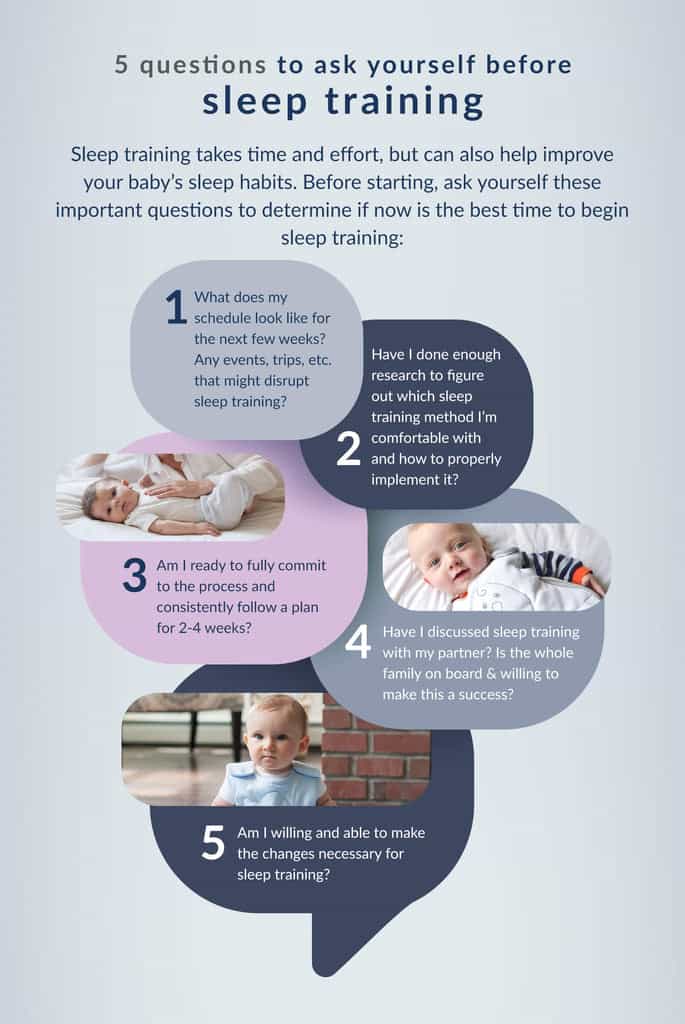How to Sleep Train Your Infant: A Gentle and Effective Guide
Hello there, wonderful parents! ? Are you dreaming of a night where your little bundle of joy sleeps soundly so you can too? Well, you’re in luck because we’re here to embark on a gentle journey into the world of sleep training! Imagine those zzz’s coming easily and the sweet sound of silence at night – that’s what we’re aiming for!
Understanding Sleep Training
Sleep training is like a cozy blanket of routine that helps your infant understand the difference between night and day and learn the invaluable skill of self-soothing. It’s all about teaching your baby to fall asleep on their own, without needing to be rocked, fed, or cuddled to sleep. But worry not! It’s not a one-size-fits-all; we will explore various gentle sleep training techniques to fit your baby’s unique personality.
When To Start Sleep Training
The magical question: when is the right time to start sleep training? The truth is, it varies. Most experts suggest between 4 to 6 months of age is the sweet spot. It’s important that your baby has developed a regular sleep-wake cycle and dropped most of their night feedings. However, always consult with your pediatrician to ensure that your baby is developmentally ready and to address any specific health concerns.
Creating a Sleep-Friendly Environment
Before we jump into the methods, let’s set the stage for success with a sleep-friendly environment! A calm, comfortable, and consistent setting is key. Ensure the room is dark – blackout curtains are a game-changer – and that the temperature is neither too hot nor too cold. Consider a white noise machine to help drown out any disruptive sounds. And most importantly, make sure the crib is safe: firm mattress, fitted sheet, and no loose blankets or toys.
Establishing a Bedtime Routine
A bedtime routine is your nightly rehearsal for beautiful dreams. Infants thrive on routine as it makes the world predictable, and sleep time is no exception. Start with calming activities like a warm bath, a gentle massage, soft music, or reading a book. Keep it short and sweet – 20 to 30 minutes should do the trick. Consistency is your best friend here; try to start the routine at the same time each night to signal to your baby that sleep time is approaching.
Choosing the Right Sleep Training Method
Now, let’s wander into the landscape of sleep training methods. There are several paths you can follow, and it’s all about finding the one that feels right for you and your little starlight. “Cry-it-out”, “Graduated Extinction”, and “No Tears” are just a few to name. We’ll dive deeper into each method in later sections, so you can pick and choose with confidence!
We understand that embarking on this sleep training journey can seem daunting, but remember, it’s about finding a harmonious balance that works for you and your baby. With patience, consistency, and love, you’ll be on your way to helping your infant learn the art of slumber. Stay tuned as we decode the different sleep training methods and provide you with step-by-step guidance to ensure a smooth journey to dreamland for your little one.
Alright, are you ready to embrace restful nights? Let’s tuck in and begin our adventure toward serene sleep! Remember, every baby is unique, and what works for one may not work for another.

How to Sleep Train Your Infant: A Gentle and Effective Guide
5 Things Parents Should Know Before Sleep Training
Alrighty, lovely moms and dads, before we get into the nitty-gritty of sleep training methods, here are five key things to know that will help you prepare for this journey:
- Patience is Everything: Just like learning to walk or talk, learning to sleep is a process. It will take time, and there may be setbacks, but with patience and persistence, you and your baby will get there.
- Baby’s Sleep Needs: Babies have different sleep needs based on their age. Newborns might sleep a total of 16-17 hours a day, but that sleep is spread out over numerous naps. As they grow, their sleep consolidates into longer stretches.
- Self-Soothing Skills: A core goal of sleep training is helping your baby develop self-soothing skills, which is their ability to calm down and go back to sleep on their own if they wake up during the night.
- Safety First: Ensure your baby’s sleeping environment adheres to the safest practices – the crib should be free from toys, pillows, and loose bedding, as these can pose hazards.
- Health Check: It’s important to confirm with your pediatrician that your baby is at a suitable age for sleep training and there are no underlying health issues that need to be considered.
Understanding Your Child’s Sleep Patterns
Begin by observing and understanding your baby’s natural sleep patterns and signs of sleepiness. Recognizing these cues and acting on them promptly can make a world of difference!
The Gradual Retreat Method
This method allows you to stay close to your baby as they learn to fall asleep, gradually increasing the distance over time. Start by sitting near the crib and slowly move further away each night until you’re out of the room.
No Tears Approach
Advocated by Elizabeth Pantley in “The No-Cry Sleep Solution,” this method emphasizes a gradual change to sleep associations, enabling your baby to sleep with less and less intervention from you.
Controlled Comforting
With controlled comforting, you’ll go to your baby at set intervals to offer brief reassurance but not pick them up. The intervals increase gradually, helping your baby understand that it’s time to sleep.
Pick Up, Put Down Method
If your baby cries, pick them up and comfort them until they stop crying, then put them back down to sleep. It reinforces the idea that you’re near and they’re safe, but also that it’s time for sleep.
Consistent Wake-Up Time
Establishing a consistent wake-up time helps to regularize your baby’s sleep-wake cycle and ensures they’re appropriately tired for sleep at the right times.
Keep in mind, effective sleep training combines the right method with a soothing pre-sleep routine and an optimized sleep environment. Monitor your baby’s response and be willing to adapt. The goal isn’t just for your baby to sleep through the night but to develop healthy sleep habits that will benefit the entire family. ??
Now that we’re equipped with the foundational knowledge and strategies, let’s begin our sleep training journey. Shine on, dedicated parents! Your little one’s restful nights are just around the corner.
See more great Things to Do with Kids in New Zealand here. For more information see here
Disclaimer
The articles available via our website provide general information only and we strongly urge readers to exercise caution and conduct their own thorough research and fact-checking. The information presented should not be taken as absolute truth, and, to the maximum extent permitted by law, we will not be held liable for any inaccuracies or errors in the content. It is essential for individuals to independently verify and validate the information before making any decisions or taking any actions based on the articles.




